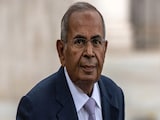India, being a developing nation with the highest population globally, should prioritise its own citizens, the Centre told the Supreme Court today while underscoring concerns regarding national security due to the illegal entry and stay of Rohingya refugees. This declaration came in response to a court petition urging the release of Rohingya refugees detained for alleged violations of the Foreigners Act.
The Rohingya crisis is a humanitarian catastrophe that has drawn international attention due to its magnitude and complexity. Originating from Myanmar, the Rohingya people have faced decades of persecution and violence, leading to a mass exodus from their homeland.
The Rohingya, primarily Muslims, have fled ethnic conflict in predominantly Buddhist Myanmar, seeking refuge in India, Bangladesh, and neighbouring countries.
Who Are The Rohingya?
The Rohingya are a Muslim ethnic minority group residing in predominantly Buddhist Myanmar. According to the United Nations, despite living in the country for generations, they have been systematically denied citizenship since 1982, rendering them stateless and without basic rights. The term "Rohingya" emerged in the 1950s as a means for the community to assert its collective identity and historical ties to the region.
Roots Of The Crisis
Decades of discrimination and marginalisation against the Rohingya by the Myanmar government have laid the groundwork for the crisis, the UN's Human Rights Council said in a report. Restrictive citizenship laws, imposed limitations on marriage, family planning, education, and freedom of movement have compounded the community's suffering.
A Rohingya refugee rescued at sea.
Photo Credit: AFP
Rakhine State, where most Rohingya reside, is Myanmar's least developed region, and a constant flashpoint in tensions between the Rohingya and other ethnic groups. The state's capital Sittwe is located nearly 650 kilometres from Myanmar's capital Napyidaw.
Escalation Of Violence
The crisis escalated dramatically in August 2017 when the Arakan Rohingya Salvation Army (ARSA), a Rohingya insurgent group, launched attacks on Myanmar police and army posts in Rakhine State. In response, Myanmar's military launched a brutal crackdown, characterised by widespread violence, mass killings, and the torching of Rohingya villages. Hundreds of thousands fled across the border into neighbouring Bangladesh to escape the atrocities.
The international community has condemned Myanmar's actions, with many labelling it as ethnic cleansing and even genocide. The United Nations, human rights organisations, and individual countries have called for accountability and justice for the Rohingya. Legal actions have been pursued at international courts, including cases at the International Court of Justice (ICJ) and the International Criminal Court (ICC). Sanctions have been imposed on Myanmar's military leaders by various nations and organisations.
Refugee Crisis
The majority of Rohingya refugees have sought shelter in overcrowded camps in Cox's Bazaar in Bangladesh. The living conditions in these camps are dire, often made worse by the annual monsoon season, which brings flooding and landslides. Disease outbreaks and lack of access to basic necessities pose significant challenges to the well-being of Rohingya refugees.
The Kutupalong camp In Cox's Bazaar is widely regarded as the world's largest refugee camp, even bigger than the Um Rakuba camp in Sudan and the Za'atari camp in Jordan.
Regional Dynamics And India's Stance
The Rohingya crisis has regional implications, with refugees seeking asylum in neighbouring countries such as India, Malaysia and Thailand.
According to a 2019 report by the US think tank Council On Foreign Relations, approximately 18,000 Rohingya refugees have officially registered with the UN refugee agency, but Indian authorities estimate that the total Rohingya population in the country stands at around 40,000. The Indian government has been actively pursuing their repatriation. Since late 2018, India has reportedly deported numerous refugees back to Myanmar.
A Rohingya refugee looks on aboard a National Search and Rescue Agency (BASARNAS) vessel after they were rescued from their capsized boat
Photo Credit: AFP
Now, the Rohingya have also been cited in debates regarding the Centre's handling of the Citizenship Amendment Act (CAA). The CAA aims to grant citizenship to migrants from Bangladesh, Pakistan, and Afghanistan, excluding Muslims, who fled religious persecution and entered India before 2015. Responding to criticism from the Opposition regarding national security concerns related to the CAA, Union Home Minister Amit Shah has countered by questioning why there is no opposition to the entry of Rohingya refugees.
The Centre has said that India has not ratified the 1951 Refugee Convention or its 1967 Protocol. Therefore, determining whether any group should be recognised as refugees is solely a matter of policy.















